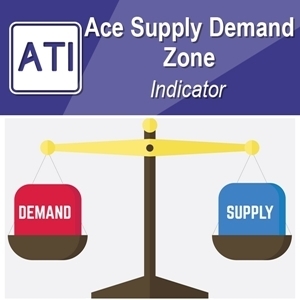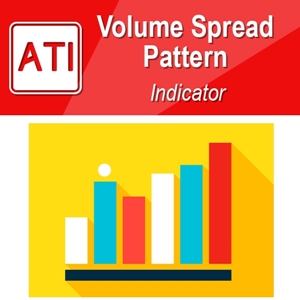Elliott Wave Trading Articles
Elliott Wave Trading Articles typically cover various aspects of Elliott Wave Theory, including its principles, application, strategies, and trading examples. Here’s what you might find in such articles:
- Principles of Elliott Wave Theory: Articles may explain the basic principles of Elliott Wave Theory, including the concept of impulsive waves (trending moves) and corrective waves (counter-trend moves), wave degrees (the magnitude of waves), and the rules governing wave formations.
- Wave Counting Techniques: Elliott Wave Trading Articles often delve into different techniques for identifying and counting waves within price charts. This involves recognizing wave patterns such as impulse waves (1, 2, 3, 4, 5) and corrective waves (A, B, C), as well as understanding Fibonacci relationships between waves.
- Wave Interpretation and Analysis: These articles may provide guidance on interpreting Elliott Wave patterns and applying them to real-world trading scenarios. This includes understanding the significance of wave structures, determining the direction of the trend, and identifying potential reversal or continuation patterns.
- Elliott Wave Strategies: Traders often seek articles that discuss specific trading strategies based on Elliott Wave Theory. These strategies may involve using Elliott Wave patterns in conjunction with other technical indicators, setting entry and exit points, and managing risk.
- Case Studies and Examples: Articles may include case studies or examples that illustrate how Elliott Wave Theory can be applied to different financial markets, such as stocks, forex, commodities, and cryptocurrencies. These examples help traders better understand the practical application of the theory.
- Critiques and Limitations: Some articles may also discuss critiques of Elliott Wave Theory and its limitations, such as subjectivity in wave interpretation, the potential for miscounting waves, and the challenge of applying the theory in real-time trading environments.
Overall, Elliott Wave Trading Articles serve as valuable resources for traders interested in learning about and applying Elliott Wave Theory to their trading strategies. They provide insights, techniques, and practical guidance for incorporating this analytical approach into the decision-making process.
In this article, we will cover Elliott Wave Theory and Elliott Wave Trading for Forex and Stock market trader. Elliott Wave is the powerful way of predicting market movement. The method stood up nearly 90 years in the trading community. Still this method is considered as the best strategy for many professional trader. Elliott Wave Theory was developed by Ralph Nelson Elliott. Ralph Nelson Elliott was one of very first person who believed that he could predict the stock market by studying the repeating price patterns in the price series. The Wave Principle from Elliott states that the wave patterns in different scales are repeating and superimposing on each other forming complex wave patterns. If harmonic pattern directly focuses on the short patterns made up from five points, the Wave Principle, developed by Ralph Nelson Elliott, describe how the financial market evolve to meet the equilibrium with the repeating wave patterns, equilibrium fractal waves. The advantage of Elliott Wave theory is that it is comprehensive as the theory provides multiple trading entries on different market conditions. With Elliott Wave theory, traders can perform both momentum trading and mean reversion trading. The disadvantage of Elliott Wave theory is that it is more complex comparing to other trading techniques. In addition, there are still some loose ends in detecting Elliott wave patterns. For this reason, many traders heavily criticize the lack of scientific methods of counting Elliott Waves.
Elliott Wave theory received good attention from many traders and investors for several decades. Elliott Wave theory is a useful technique to deal with the financial market with the dominating Equilibrium Fractal-Wave process. For the financial market with strong Equilibrium Wave process (2nd, 3rd and 4th columns in the Price Pattern Table), traders must use alternative methodology over Elliott Wave techniques because Elliott Wave Theory is not meant to deal with Wave process. Seasonality or other cyclic fluctuations can be dealt better with other techniques. For example, Seasonal Exponential Smoothing, Fourier Transform, Principal Component Analysis or Wavelet Transformation might do better job for such a case. Some literature review and empirical research can yield helpful insight on which market trader can trade better with Elliott Wave Theory. In our Book, we will introduce the fundamentals of the Wave Principle. At the same time, we will introduce the template and pattern approach towards more scientific wave counting for traders.
The Wave Principle states that the crowd or social behaviour follows a certain wave patterns repeating themselves. The Wave Principle identifies two wave patterns. They are impulse and corrective wave. Often, the term impulse wave is interchangeably used with the motive wave. Two terms are identical. Both motive and impulse wave progress during the main trend phase whereas the corrective wave progress during the corrective phase against the main trend. In general, the Impulse Wave has a five-wave structure, while the Corrective Wave have a three-wave structure. It is important to understand that these wave structures can override on smaller wave structure to form greater wave cycle. Elliott Wave theory is useful in identifying both trend market and correction market. As the Elliott Wave Theory already assumes that price progresses in the Fractal-Wave form, they do not suffer from lagging of price like the smoothing algorithm based technical indicators do.
Here are some articles giving you insight about Elliott Wave and its automated tool.
1) How Elliott Wave can Improve your Trading Performance
This article covers the essence of “Template and Pattern Approach” to count Elliott Wave. Then it explains two steps:
- Building up wave counting using template (or patterns) first
- Use the Wave score to get the scientific justification or when the wave score is not available, then you can check the correct location of each wave point to judge the valid trading point
https://algotrading-investment.com/2018/10/25/how-elliott-wave-can-improve-your-trading-performance/
2) Basic Tutorial for Elliott Wave 1, 2, 3, 4 Pattern Identification
This is the medium sized article explain the detailed steps of identifying Elliott Wave 1234 pattern. After identifying the Elliott Wave 1234, this articles help you to further analysis the validity of patterns for your trading.
3) Identifying Corrective Wave in Elliott Wave
This is really short article helping you to find the corrective wave in price series. This is quick operational article. I think you should read article 1) and 2) before reading this article.
https://algotrading-investment.com/2019/09/30/identifying-corrective-wave-in-elliott-wave/
Here is link to the Elliott Wave Trend indicator
https://www.mql5.com/en/market/product/16479
https://www.mql5.com/en/market/product/16472
https://algotrading-investment.com/portfolio-item/elliott-wave-trend/
Related Products







